parking minimums
description: regulation that governs how much parking spots a building should provide
10 results
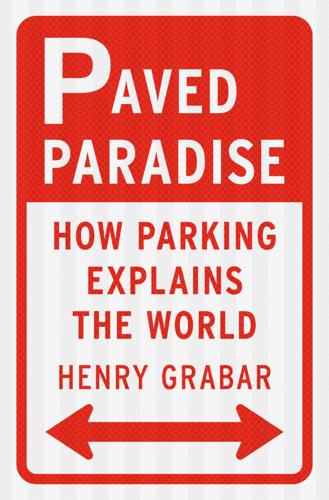
Paved Paradise: How Parking Explains the World
by
Henry Grabar
Published 8 May 2023
Parking requirements had been copied from other cities, distorted by misleading evidence, and implemented without examination, where they had molded a half century of architecture literally built around (or, more often, surrounded by) parking minimums. The American modernist Louis Sullivan said form follows function; Don Shoup said form follows parking requirements. “Free parking has become the arbiter of urban form, and cars have replaced people as zoning’s real density concern,” he wrote. In 2019, fourteen years after Shoup’s book came out, ITE president Bruce Belmore renounced the idea of mandatory parking minimums in a preface to the organization’s monthly journal. “Parking minimums make some broad assumptions, including the idea that all homeowners can afford a car, want to pay for a parking stall, and that the car is their preferred mode of transportation,” the engineers’ president wrote.
…
Shoup wanted San Francisco to create a parking market that would raise prices high enough to ensure free spaces on every block, as opposed to the familiar first-come-first-served system that leads to that lurching style of driving known as “cruising” for a spot—“parking foreplay,” per Shoup—as well as countless altercations. The second was an end to the parking-minimum laws that required new parking spots in every new or renovated building. “Half the profession thought I was crazy and the other thought I was dangerous,” he told me, a little dramatically. * * * — The idea of parking minimums, proposed in the twenties, rolled out in the thirties, and expanded nationwide in the forties and fifties, was obviously enticing: cities could force the private sector to fix the parking problem.
…
Every city planner in America has a reference book of parking formulas that dictate, with the confidence, specificity, and evidence of a medieval alchemist, exactly how much parking must accompany a given land use. Their exactitude is mathematical. But the parking minimums that govern development in every American city, Shoup discovered, were not very good. The idea was bad and the execution was worse. Instead, he wrote in High Cost, parking minimums displayed “a breathtaking combination of extreme precision and statistical insignificance.” A typically prolix and arcane document governed construction in the city of Detroit, which requires one off-street parking space for every “tumbling apparatus” at a tumbling center; employee at a youth hostel; pool table in a pool hall; two employees in an emergency shelter; three beds in a fraternity; four beds in a nursing home; four seats in a theater; five beds in a boarding school; and six seats in a stadium, church, chapel, mosque, synagogue, or temple; and one off-street parking space per: 100 square feet in an armory, substance abuse facility, assembly hall, beauty shop, or golf course clubhouse; 150 square feet in a courthouse or customs office; 160 square feet in a police station; 200 square feet in a food stamp distribution center, bank, laundromat, or medical marijuana caregiver center 200 square feet of water in a swimming pool (plus one per six seats of spectator seating) 400 square feet in a library, museum, ice-skating rink, or aquarium.
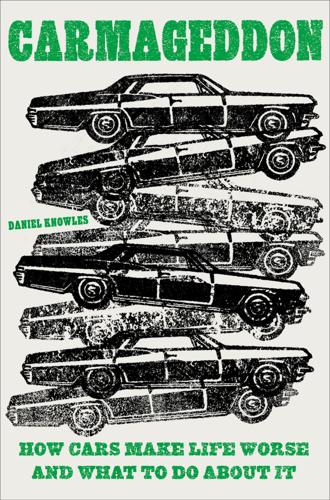
Carmageddon: How Cars Make Life Worse and What to Do About It
by
Daniel Knowles
Published 27 Mar 2023
Relative to what came after, it was actually rather efficient, and did provide relatively cheap housing, something now extraordinarily rare in Los Angeles, where the median rent for a one-bedroom apartment is around $2,100 per month. In 1965, the city raised the parking requirement again, to 1.5 spaces per apartment, bringing to an end much of the dingbat boom. Many apartments in the city are now required to have two parking spaces, not one. It is not just apartments. Office buildings come with parking minimums, as do retail stores. There are parking minimums for almost anything, in fact. It is not the free market that results in American buildings being surrounded by oceans of tarmac for storing vehicles, it’s the law. Read Los Angeles’s planning documents and you get a sense of how this works now. It is exhausting. The West Hollywood municipal code dictates that, for example, “senior housing” (nursing homes) must have 0.5 spaces for every resident, as well as one space for guests for every 10 residents.
…
Fears about global warming in particular are helping to press people to think about how to do without driving as much, something that Shoup finds strange, since climate change is surely less visible to people than air pollution and congestion. Across America, more and more cities are beginning to replace parking minimum rules with parking maximum rules—something most British cities did in the early 2000s. Even California has removed parking minimums near public transit stops. But the trouble, in much of the world, is what Shoup and other economists call “path dependency.” Or in other words, the decisions to prioritize driving were made long ago, and now American cities are so sprawling it is hard to pack them back in again.
…
In lots of places, on both sides of the Atlantic, that rhetoric is at least partially being backed by action. Cities across America, even including ones like Houston and Los Angeles, are beginning to roll back parking minimums, and to reduce the amount of suburban “single family” homes being built in favor of denser, more city-focused development near transport. Minneapolis has built thousands of new apartments since it eliminated parking minimums in 2018. In Europe, biking has taken off in a spectacular fashion, and not just in Paris. Even my hometown, Birmingham, one of the most automobile-obsessed cities in Europe, is beginning to change.
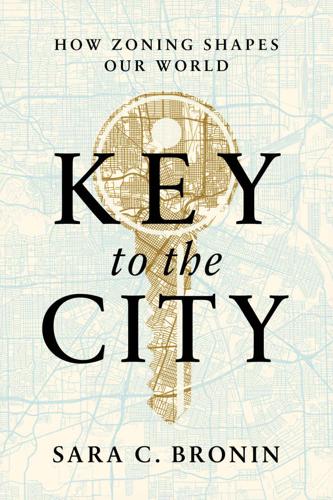
Key to the City: How Zoning Shapes Our World
by
Sara C. Bronin
Published 30 Sep 2024
Sacramento slashed parking minimums by half for affordable and senior housing, eliminated them for locations within a quarter mile of an existing or proposed light rail station, and reduced them by half for locations about a ten-minute walk from such stations. The city also fully exempted small residential lots of 6,400 square feet or less; the nonresidential uses in mixed-use buildings that were mostly residential; and historic buildings converted to residential use. Finally, the zoning code divided the city up into four parking districts, including a central business district that had no parking minimums and a maximum of one space per 400 square feet for commercial uses, as well as bike parking requirements.
…
All these parking spaces also have serious ramifications for the environment. Pavement contributes to polluted stormwater runoff that ultimately ends up in our watersheds. Pavement traps heat, adding to the urban heat-island effect, which is the increase in temperature caused by hardscapes and buildings in urbanized areas. And parking minimums actually lead to more driving, and in turn more greenhouse gas emissions. Obviously, people with cars drive more than people without cars, and research has shown that when the cost of parking is “bundled” with the price of housing, and its cost thus hidden, people are 60 to 80 percent less likely to be vehicle-free.
…
The thinking behind these changes has been that people taking light rail or bus rapid transit, or people living or working in more densely populated mixed-use areas probably don’t need a car to get around. The rural Idaho town of Sandpoint—the one that required a bank to build 118 parking spaces—also repealed parking minimums for its downtown. That repeal allowed a local taqueria to add new seating, while a growing tech startup remained in town, both impossible before, because they could not pack the additional parking required onto their lots. Moreover, the town allowed nearby properties with different functions, like offices and residential buildings, to apply for approval to share parking facilities, rather than each providing their own.
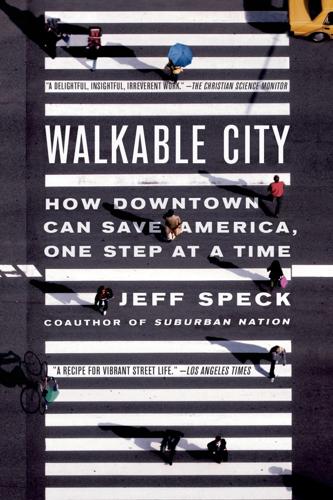
Walkable City: How Downtown Can Save America, One Step at a Time
by
Jeff Speck
Published 13 Nov 2012
But before we beat that city up too badly, let’s turn our accusing gaze back to the Green Metropolis itself, where the New York City Housing Authority still maintains parking minimums for its publicly assisted housing stock. These minimums have caused the city to abandon plans to add much-needed street-edge buildings to several of its 1960s “tower in the park” projects. Currently, one such project, in Brownsville, Brooklyn, hangs in the balance. It would replace surface parking lots with housing, shops, schools, and gardens, but it is being held up by parking minimums—despite being directly adjacent to two stops of the 2, 3, 4, and 5 subway lines straight to Manhattan.
…
From February through July, average peak use never rises above three hundred cars, and at no time does occupancy top 47 percent.21 This was an expensive lesson, a $100,000/month I told you so for the District and its taxpayers—now in its fifth year—as parking revenues fail to cover debt service on the garage. It was just the kick in the pants the city needed to finally rewrite its fifty-year-old regulations to eliminate parking minimums for new shops, offices, and apartments near Metro stations.22 They have decided to leave commercial parking provision to the free market, as Donald Shoup recommends. Even smaller suburban cities are beginning to find that their parking requirements are routinely too high. A useful experiment was conducted in progressive Palo Alto, California.
…
Similarly, a thriving restaurant that wants to add sidewalk dining—something every city now says it wants—can’t do so without increasing its parking supply, often an impossibility.27 The only path to providing more parking in urban areas is typically to replace surface parking lots with multistory decks, at tremendous cost. That money is increasingly difficult to come by. This parking-induced commercial stasis is only half the story. The other half is the great burden that parking minimums place on affordability, especially for housing, and most especially in those communities that most need it. Developers in San Francisco estimate that the city’s one-space-per-unit requirement adds 20 percent to the cost of affordable housing. Shoup calculates that eliminating this requirement would allow 24 percent more San Franciscans to buy homes.
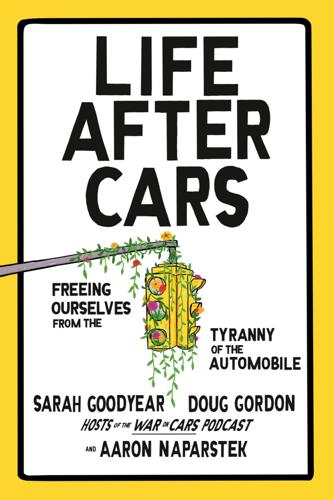
Life After Cars: Freeing Ourselves From the Tyranny of the Automobile
by
Sarah Goodyear
,
Doug Gordon
and
Aaron Naparstek
Published 21 Oct 2025
Parking Reform Is Contagious Founded in 2019, the Parking Reform Network is a national organization that aims to educate the public about the impact of parking policy on “climate change, equity, housing, and traffic,” as well as to support and push for the adoption of parking reforms. This fight against parking minimums might have seemed like a quixotic quest when the organization was founded, in 2019, by Tony Jordan, who calls himself a “full-time parking reformer and rabble-rouser.” But the Parking Reform Network now can point to ninety-one (and counting) examples of cities around the world eliminating their parking minimums. The movement has been spreading across the country, and the cities and towns in question represent a true cross section of America—red counties and blue, big cities and small.
…
His work has a lot of fans who are decades younger than he was, some of whom are proud to be known as “Shoupistas,” and his detailed analysis of the flawed nature of the way we price parking—or, let’s call it what it is, “car storage”—has catalyzed an international movement to reform building codes that call for parking minimums in new residential, retail, and office developments. After a century of building more and more spots in the hopes of finding a place to put our cars wherever we stop driving them, we are left with anywhere from a billion to two billion parking spaces in the United States. No one is really sure how many; at the same time, everyone also seems to be sure that there could never be enough.
…
And here is where the cascade of negative effects comes crashing down on our cities, towns, and suburbs. Those consequences include things you might expect—like difficulty in building bike lanes or traffic-calming infrastructure that makes direct use of curb space. But the ramifications are far more pervasive than that. Most cities have so-called parking minimums, codes requiring new developments of any kind to provide off-street parking for a given number of vehicles per residential unit or per expected shopper. These minimums, which vary wildly from place to place, are based on “market requirements” that consist of little more than guesswork, according to Shoup.
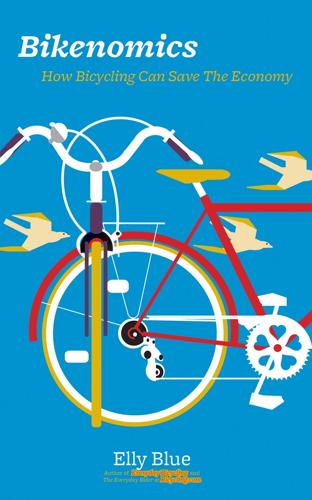
Bikenomics: How Bicycling Can Save the Economy (Bicycle)
by
Elly Blue
Published 29 Nov 2014
Car owners pay about a quarter of that cost directly; the rest is a subsidy which we all pay indirectly. Litman, T., “Transportation Cost and Benefit Analysis II – Parking Costs,” VTPI. 2012 97 Mieszkowski, K., “We Paved Paradise,” Salon. October 1, 2007 In England parking minimums been removed entirely, thanks to bipartisan efforts—conservatives like deregulation, and liberals like the multitude of public benefits. Portland, Oregon removed parking minimums in the 1980s in areas with frequent transit service, with good success (it has very recently reinstituted them after neighbors of a planned new development feared that on-street parking in that area, which is free, would become hard to find). 98 Gotschi, T., and Mills, K., “Active Transportation For America,” Rails to Trails Conservancy. 2008 99 Pucher, Handy, and Dill, “Infrastructure, programs, and policies to increase bicycling: An international review,” Preventive Medicine. online September 16, 2009 100 Lee and March (2010), Recognising the Economic Role of Bikes: Sharing Parking in Lygon Street, Carlton, Australian Planner Findings are per square meter of parking on retail heavy Lygon Street; 99% of parking space was for cars, 1% for bikes. 101 Ligeti, Eva “Bike Lanes, On Street Parking, and Business” Clean Air Partnership. 2009 102 Clifton, K “Business Cycles: Catering to the Bicycling Market,” OTREC 2012 103 Buck, Darren, “Bikeshare Equity Framework,” (bikepedantic.wordpress.com) November 29, 2012 104 .
…
Shoup estimated the entire parking subsidy of free parking to be at least $127 billion in 2002—an amount that would put a nice dent in the cash-strapped transportation budget.96 We are quite literally paying people to drive. It’s not just taxpayers footing the bill, but businesses and housing developers. This is not always because they see it as a good investment. In fact, it’s prohibitive—the average cost to build structured parking in the U.S. is $15,000 per space. But most cities have had parking minimum laws on the books since the 1950s, requiring any new housing, workplaces, and commercial developments to provide a certain number of parking spaces whether or not their residents, employees, or customers drive. There is always some pushback against these requirements, partly as a matter of space and subsidy, and the huge costs involved.
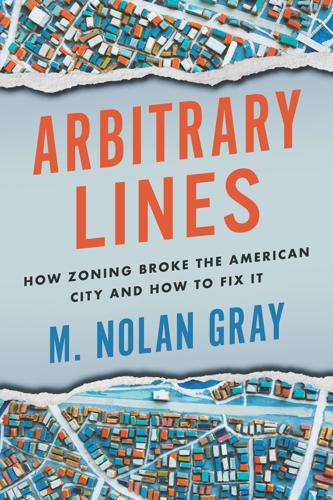
Arbitrary Lines: How Zoning Broke the American City and How to Fix It
by
M. Nolan Gray
Published 20 Jun 2022
Erick Trickey, “How Minneapolis Freed Itself from the Stranglehold of Single-Family Homes,” Politico, July 11, 2019, https://www.politico.com/magazine/story/2019/07/11/housing-crisis-single-family-homes-policy-227265/; Todd Gill, “Fayetteville Eliminates Minimum Parking Requirements,” Fayetteville (AR) Flyer, October 7, 2015, https://www.fayettevilleflyer.com/2015/10/07/fayetteville-eliminates-minimum-parking-requirements/; Angie Schmitt, “Hartford Eliminates Parking Minimums Citywide,” Streetsblog, December 13, 2017, https://usa.streetsblog.org/2017/12/13/hartford-eliminates-parking-minimums-citywide/. 3. Certain experienced planners may prefer to skip this section as needlessly restating what they already know; certain lay readers may prefer to skip it for its unavoidable wonkiness. Both should resist the urge, as this constitutes the less-exciting-yet-necessary vegetables of the book!
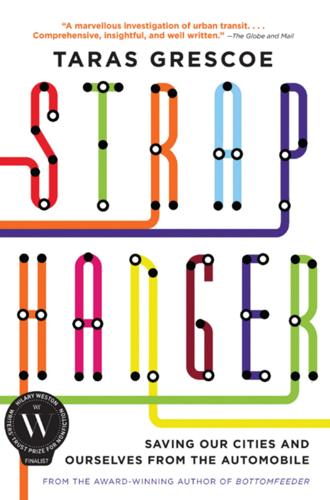
Straphanger
by
Taras Grescoe
Published 8 Sep 2011
If all the parking spaces in downtown Los Angeles were spread out in a single surface lot, they would cover 81 percent of the central business district’s land area (versus 31 percent in San Francisco)—the highest parking coverage ratio on earth. Free parking, as Shoup puts it, “is a fertility drug for cars.” He and his followers, the self-styled “Shoupistas,” believe that many urban congestion problems stem from civically mandated parking minimums. An enterprising mayor who wanted to permanently revolutionize the city’s form, and force a huge spike in transit ridership, would have to enact one simple policy change: limiting, or eliminating, off-street parking requirements in new developments. It would also be a good way to get tossed out of office.
…
Saving our cities from the automobile is going to involve welcoming transit-oriented development, infill in old central city neighborhoods, and multifamily buildings and apartments in what were once low-density areas. It will mean brandishing the stick of congestion and more expensive parking to discourage drivers—a simple way to start would be to heed the “Shoupistas,” the followers of University of California professor Donald Shoup, and turn parking minimums into maximums in new developments—while dangling the carrot of safe, comfortable, and frequent transit to draw new riders. For cities, it will involve building high-quality bicycle lanes, pedestrian-oriented urban spaces, and the best public transport money can buy—without cutting back on the frequency or quality of bus service essential to keep rapid transit working.

Street Smart: The Rise of Cities and the Fall of Cars
by
Samuel I. Schwartz
Published 17 Aug 2015
Prior to the 1990s, Zurich had parking regulations comparable to those in most other European and American cities. For every square foot of new construction, whether residential or commercial, some minimum amount of parking would likewise be required. In 1989, though, the city changed from a parking minimum to a parking maximum. And the maximums weren’t very maximal. For every 1,333 square feet authorized by a Zurich construction permit, developers were allowed to supply only a single parking space. In the United States, a comparable permit would require at least three spaces for the same amount of square footage.
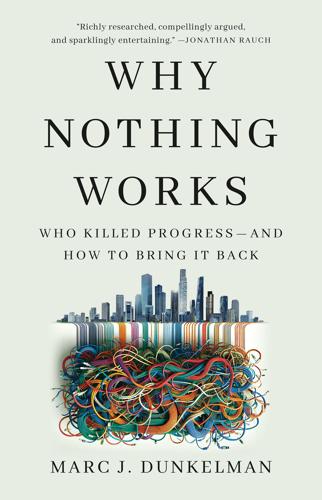
Why Nothing Works: Who Killed Progress--And How to Bring It Back
by
Marc J Dunkelman
Published 17 Feb 2025
The new hurdles often added months, if not years, onto the gestation of worthwhile projects, meaning that housing proposed during a boom might still be under consideration when the economy hit turbulence and demand melted away.73 What’s more, to exacerbate the hurdles community members could exploit to thwart change, reformers leaned into restrictions that imposed parking minimums, density limits, and other criteria.74 But the most powerful tool reformers devised in the campaign to push power down to ordinary citizens centered on the environment. By 1975, twenty-five states had begun requiring developers to study how their proposal might impact the local water table, or harm nearby wildlife, or worsen traffic patterns, or create some other potential problem before moving forward.